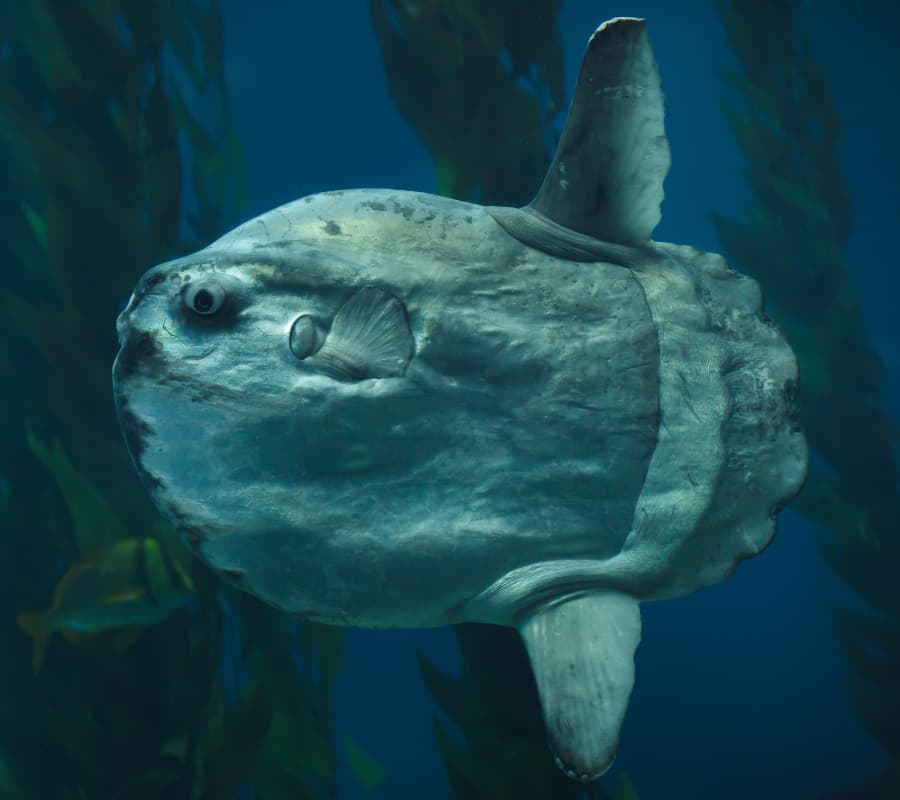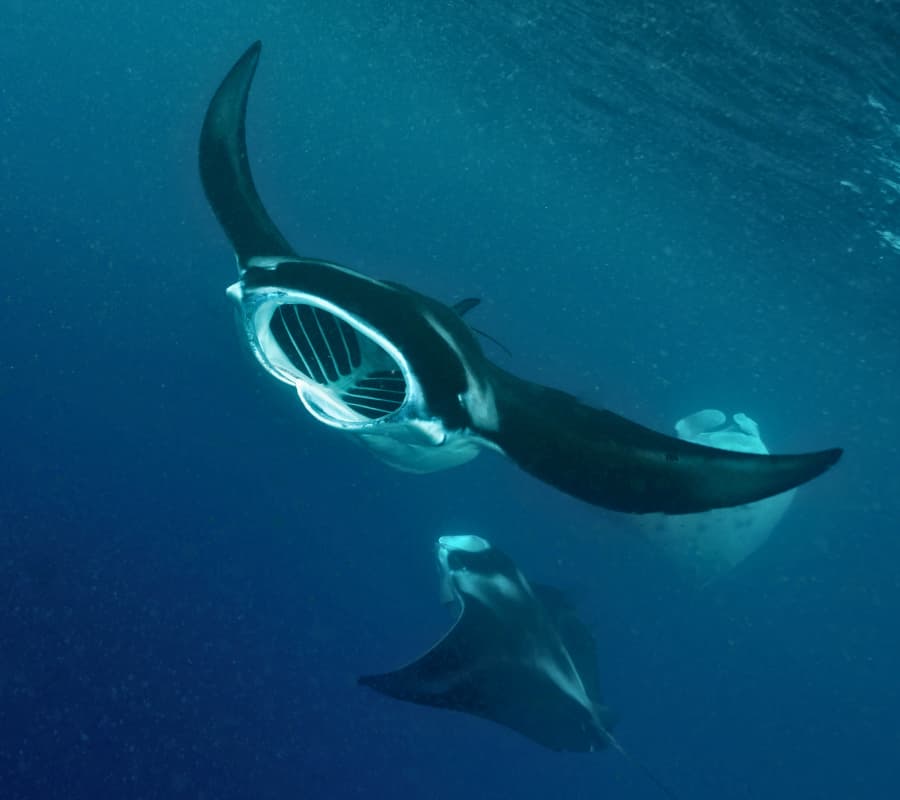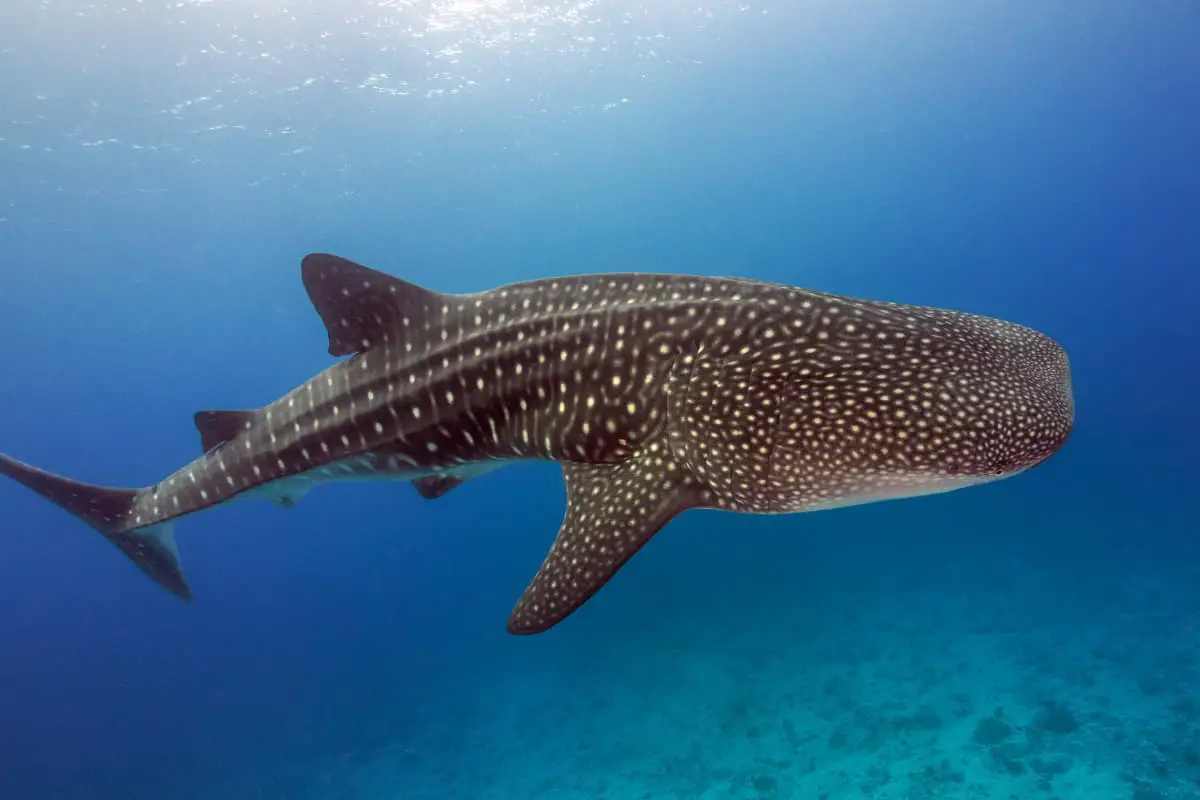When it comes to the biggest fish in the ocean, the Rhincodon typus or whale shark takes the crown. These gentle giants can grow over 55 feet in length and weigh as much as 40 tons.
Despite their intimidating appearance, they are commonly docile and approachable. Whale sharks are slow-moving filter feeders that primarily eat plankton and small fish.
- Whale sharks can live up to 100 years, making them one of the longest-lived fish species in the world.
- They are found in warm waters around the world, including in the Atlantic, Pacific, and Indian Oceans.
- Whale sharks are known for their distinctive pattern of white spots and stripes on their dark blue or gray skin. Each shark has a unique pattern, which can be used to identify individual sharks.
- These gentle giants are not aggressive and pose no threat to humans. In fact, they are often sought out by divers and snorkelers who want to swim alongside them.
- Whale sharks are oviparous, meaning they lay eggs that hatch outside of the mother’s body. However, they are also capable of giving birth to live young in some cases.
- Despite their massive size, whale sharks have small brains relative to their body size. Scientists are still studying their cognitive abilities and behavior.
Despite their enormous size, these filter feeders are harmless to humans and are a popular attraction for divers and snorkelers around the world.
Where Can You Find Whale Sharks?
Whale sharks are warm water creatures and range throughout tropical oceans around the world.
They are most commonly spotted in the waters off the coast of Australia, Japan, and the Philippines.
What Do They Eat?
Although its mouth can be four feet wide, a whale shark’s teeth are so small that it can only ingest small crustaceans, fish, and plankton by using its gill rakers as a suction filter.
They can process almost 6,000 litres of water each hour through their gills.
How Big Can They Get?
Whale sharks can grow over 50 feet in length and weigh as much as 40 tons. However, the largest-ever confirmed whale shark was 62 feet long.
Basking Shark – Second Biggest Fish in the Sea

The basking shark, also known as Cetorhinus maximus, can be found in the waters of the North Atlantic, Pacific, and Indian Oceans. They are the second largest fish in the world, after the whale shark, and can grow up to a whopping 32 feet long! That’s longer than a school bus!
What Do Basking Sharks Feed On?
Despite their massive size, basking sharks are gentle giants.
They are filter feeders, meaning they swim around with their mouths open, filtering plankton and small fish from the water.
They have gill rakers that act like a sieve, trapping food while allowing water to pass through.
More interesting Facts about the Basking Shark
Basking sharks are often found near the surface of the water, basking in the sun. This behavior is where they get their name. They are cold-blooded, so they need to warm up in the sun to keep their bodies functioning properly.
Another interesting fact about basking sharks is that they are ovoviviparous, meaning they give birth to live young. However, unlike most live-bearing animals, basking sharks do not have a placenta to nourish their developing embryos. Instead, the embryos feed on unfertilized eggs in the mother’s uterus.
Unfortunately, basking sharks are listed as vulnerable on the International Union for Conservation of Nature’s Red List. They have been hunted for their meat, oil, and fins, and are also at risk of being accidentally caught in fishing nets.
What about the Biggest Bony Fish in the Ocean?
Aside from the whale shark, there are several other species of large fish in the ocean. The ocean sunfish, also known as the Mola mola, is the largest living bony fish in the world.
(The Whale shark is undoubtedly THE largest fish in the sea… and it is a shark, so it’s skeleton consists of cartilage rather than bone. Consequently the Mola mola is the largest BONY fish.)

Mola mola can weigh up to 4,600 pounds and grow as long as 10.8 feet. The giant oceanic manta ray is another large species of fish that can grow up to 23 feet in width.
The Manta Ray
If you’re looking for one of the largest fish species in the world’s oceans, look no further than the manta ray. These docile creatures are a sight to behold, and they play a critical role in the ocean’s ecosystem. In this section, we’ll take a closer look at the manta ray, including what they are, where you can find them, what they eat, how big they can get, and why they’re important to the ecosystem.

What is a Manta Ray?
Manta rays are a species of cartilaginous fish, belonging to the family Mobulidae. They have flat, diamond-shaped bodies that can grow up to 7 meters in width. They are closely related to other species of rays, such as the sharptail mola and the hoodwinker sunfish. Manta rays can be found in tropical and subtropical waters around the world, including the Atlantic, Indian, and Pacific Oceans.
Where Can You Find Manta Rays?
Manta rays are found in warm, tropical seas, where they feed on zooplankton. They are often found near coral reefs and other areas where schooling fish are abundant. Manta rays are known to migrate long distances, and they can be found in a variety of different water temperatures.
What Do They Eat?
Manta rays feed on a variety of prey, including zooplankton, small fish, and crustaceans. They use their large, open mouths to filter feed, and they can consume up to 60 pounds of food per day.
How Big Can They Get?
Manta rays are among the largest fish species in the world, with some individuals weighing up to 2,000 kilograms. They can grow up to 7 meters in width, and they have distinctive coloration on their backs that can help identify individual animals.
Why Are They Important to the Ecosystem?
Manta rays play a critical role in the ocean’s ecosystem, serving as both predators and prey. They are an important food source for natural predators such as cetaceans and other cartilaginous fish.
At the same time, they help regulate populations of zooplankton and other small organisms. Unfortunately, manta rays are also overfished in many parts of the world, and they are listed as vulnerable on the IUCN Red List of Threatened Species.
Even More Huge Fish
Other large fish species include the basking shark, great white shark, and tiger shark.
These predatory sharks can grow up to 20 or 25 feet in length and are found in temperate and tropical oceans around the world.

